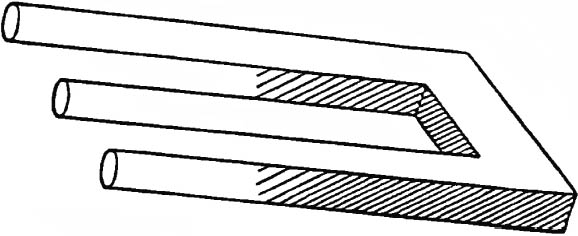AN INTEGRATED APPROACH TO RISK ASSESSMENTS AND CONDITION SURVEYSJOEL TAYLOR
4 TOP-DOWN (INDIRECT) AND BOTTOM-UP (DIRECT) PROCESSINGWaller 1994, 2003) comments on the uncertainty that is inherent within risk assessment, noting that “we do not currently have the knowledge required to do this precisely” (Waller 1994, 12). It is this ambiguity in expectation and the ambiguity of observation within collection condition surveys (Taylor and Stevenson 1999; Taylor and Watkinson 2003) that are important to recognize. Using these two techniques together to temper each other may reduce the uncertainty. Visual perception has traditionally been divided into two contrasting theories: top-down processing, by which the mind guides representation of objects before the stimulus is processed, and bottom-up processing, by which an array of stimuli determine our perception. Since their conception, these conflicting theories have been integrated by various workers (Neisser 1976; Marr 1982) to accommodate their advantages and shortcomings. When integrated, the relative contributions of these processes will vary from situation to situation (Eysenck and Keane 2000). They are affected by the amount of information that can be retrieved from a situation, and by existing knowledge about the object or space. Top-down processing creates expectations of the world around us based on our experience. Bottom-up processing involves the more information-rich data that the world contains. By recording this information into a new framework, an added layer of perception through which the world is represented, and therefore viewed, lies between the conservator and an understanding of the risks to their collections. This integration of seemingly opposing approaches has led to a clearer understanding of visual perception. In terms of condition surveys, it is a way of creating a framework for interpreting the data. In terms of risk assessments, it is a way of incorporating information-rich aspects of the environment. 4.1 TOP-DOWN PROCESSINGTop-down processing is based on knowledge and bringing knowledge to the perceptual event. What we have perceived in the past affects what we perceive in our present environment. This representation is supplemented by sensory information. Everyday perception is frequently supplemented by what we know; for example, the shape of an object seen from only one angle is afforded a three-dimensional representation. Perception, as a result, is guided by what information the perceiver selects (fig. 3). What is important for accurate perception, in top-down terms, is context. Top-down processing has clear parallels with data used in preventive conservation, since the information is recorded in predetermined categories based on a theoretical construct—the deterioration of materials under certain conditions. Condition survey forms provide a basic conceptual context for the information to be processed—an expectation to a certain extent—but risk assessment creates an actual frame-work based on this conceptual understanding. This point is pertinent, since the environment to which a collection is exposed at a particular point in time is much like an individual percept from which one must interpret.
Top-down processing describes a process that can be subjective, in that the information is led by past experiences to create explanations, even hypotheses (Gregory 1972, 1974, 1998), of stimuli around them. However, the top-down theory does not provide a complete picture. For example, top-down processing does not account for the similarities between different perceptions. 4.2 BOTTOM-UP PROCESSINGBottom-up processing is related to the role of the data. Here the information being viewed, rather than the perceiver, is the starting point of perception. The process is similar to the way condition surveys are purported to collect data, in which information is collected and then interpreted. Individual interpretation is not heavily involved in bottom-up processing. Information is not perceived as an abstract image but in its context, so it is very information-rich. However, background knowledge is not considered a significant factor in bottom-up processing, so the framework for interpreting data is not well developed. As condition surveys collect data from an information-rich environment to be recorded and interpreted, the snapshot results have much in common with bottom-up perception that involves a single percept. Since bottom-up theory offers little in terms of how information is interpreted, it has more in common with empirical approaches to collection assessment. The two theories directly conflict on several points, which are mentioned in table 2. |
